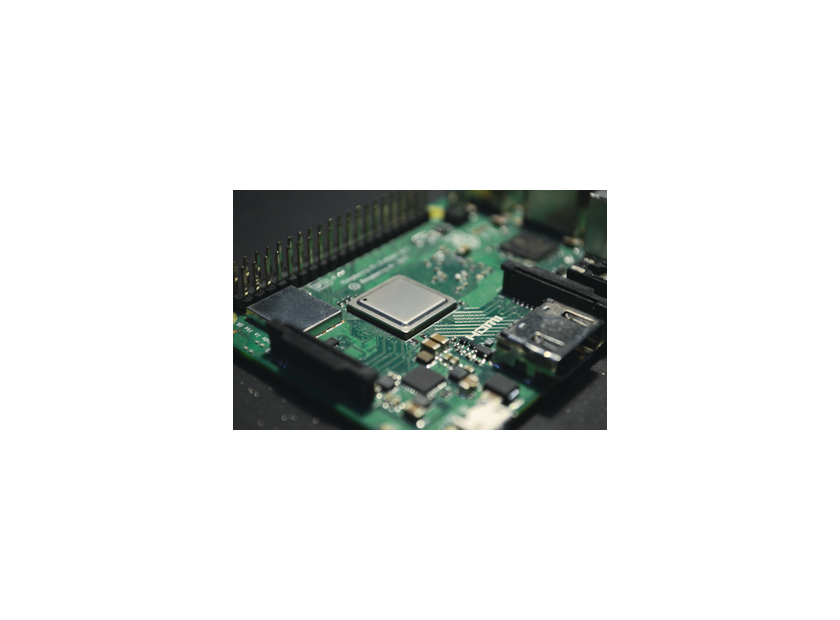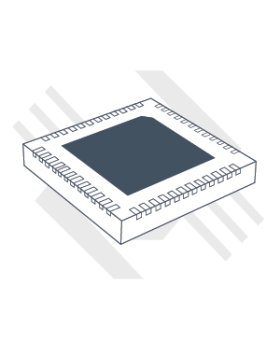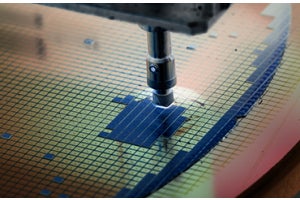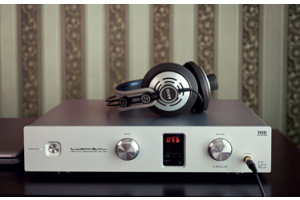-
Audio
-
Amplifiers
Pre-amplifiers
Transistors
Balanced I/O
Power Management
Dynamics Processors
Special Function
-
-
Industrial
-
Power Management
Discrete Semiconductors
Op-amps and Comparators
IIoT Memory
Sensor Technology
Alarms and Monitoring
-
-
Partners
- Why Profusion?
- News
- Contact
-
Store
Using Multiple Power Management ICs… Is There A Better Solution?
February 11, 2025
Using Multiple Power Management ICs… Is There A Better Solution?
Power management ICs are essential in all electronic devices; however, the importance of the power supply and system power requirement is commonly overlooked. The circuit designer must consider the specific power requirements of each section of the application to design a stable and reliable system and often asks for a more efficient tailor-made solution. A good example is a laptop, where many kinds of power management ICs are used.
The image below shows an example of the power tree to supply power to all individual sections:
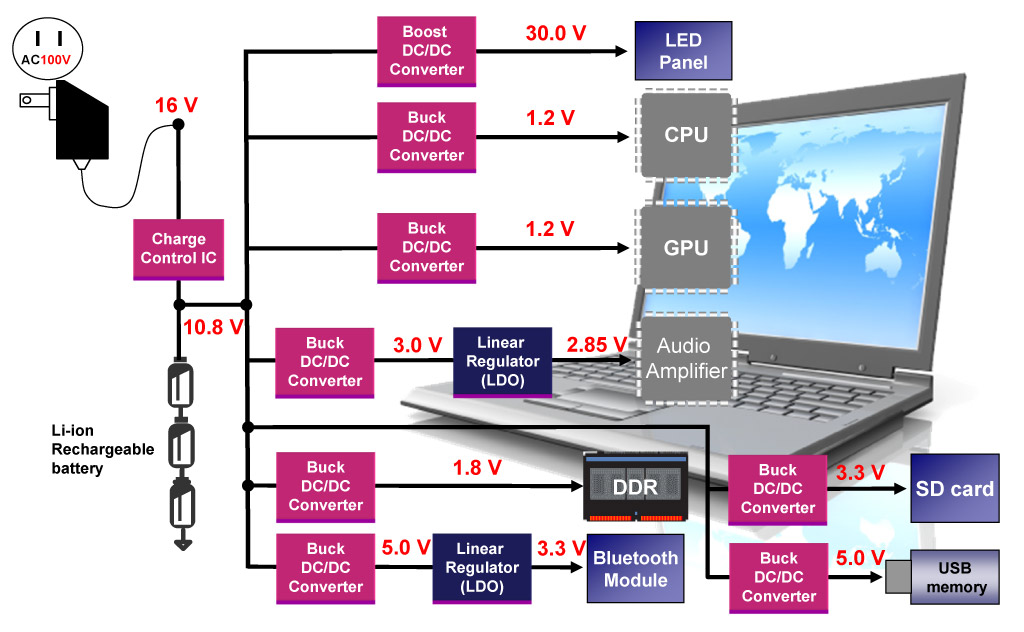
Selecting, Combining, Monitoring and Controlling
The CPU and GPU circuits have a high level of integration and are manufactured according to the latest microfabrication technologies. These advanced technologies consume large currents and require a very low operating voltage. Therefore, buck (step-down) DC/DC converters are commonly adopted for use in the source lines to the CPU and GPU to achieve an efficient conversion.
However, DC/DC converters are inappropriate for audio amplifiers because the switching noise generated by those converters interferes with the sound quality. Therefore, an LDO regulator is typically added to a DC/DC converter to reduce the switching noise and improve sound quality. As for other noise sensitive circuits, such as the Bluetooth module, an LDO may also be preferred as a power supply.
Monitoring the specific sections of the power supply is essential to maintain optimal voltage levels, and some intervention with a voltage detector is required if voltage is operating beyond the required specifications. Additionally, some supply voltages are only necessary when specific sections of the device are in use, allowing the power supply to be switched off by a switching IC when inactive, to conserve power consumption and extend battery lifetime. To further optimize, it may be needed to start up the power management ICs in a particular sequence.
Use a PMIC Solution
As you can understand, such a complete configuration may become rather complex, and many tools for power management are required, increasing the part count and cost. It would be better to select a smarter and more efficient approach. For example, by using a so-called PMIC IC that integrates multiple DC/DC converters, LDOs, voltage monitors and electronic switches, all embedded into a single IC.
Nisshinbo Micro Devices offers various PMIC ICs, but for this article we’ll focus on the RN5T5612, available in a QFN0707-48-P25 package and measuring only 7 × 7mm. This IC includes four high-efficient step-down DC/DC converters, seven low-dropout regulators, four GPIOs, an interrupt controller (INTC) and an I2C-Bus interface…
The PMIC includes custom programmable features in a One-Time Programmable (OTP) memory for the initial output voltage setting and start-up/shut-down sequencing. Additionally, its two-wire I2C interface (operating at 400kHz or 3.4MHz) allows further control, such as enabling or disabling individual output voltages. The Dynamic Voltage Scaling (DVS) feature enables precise voltage adjustments, with increments of 50mV for OTP and 50mV or 12.5mV for LDO and DC/DC outputs via register settings. DVS is a power management technique used in electronic systems, to adjust the voltage supplied to the processor based on its workload. The goal of DVS is to save energy by reducing the power consumption of the processor, especially when the workload is low and full power is not needed.
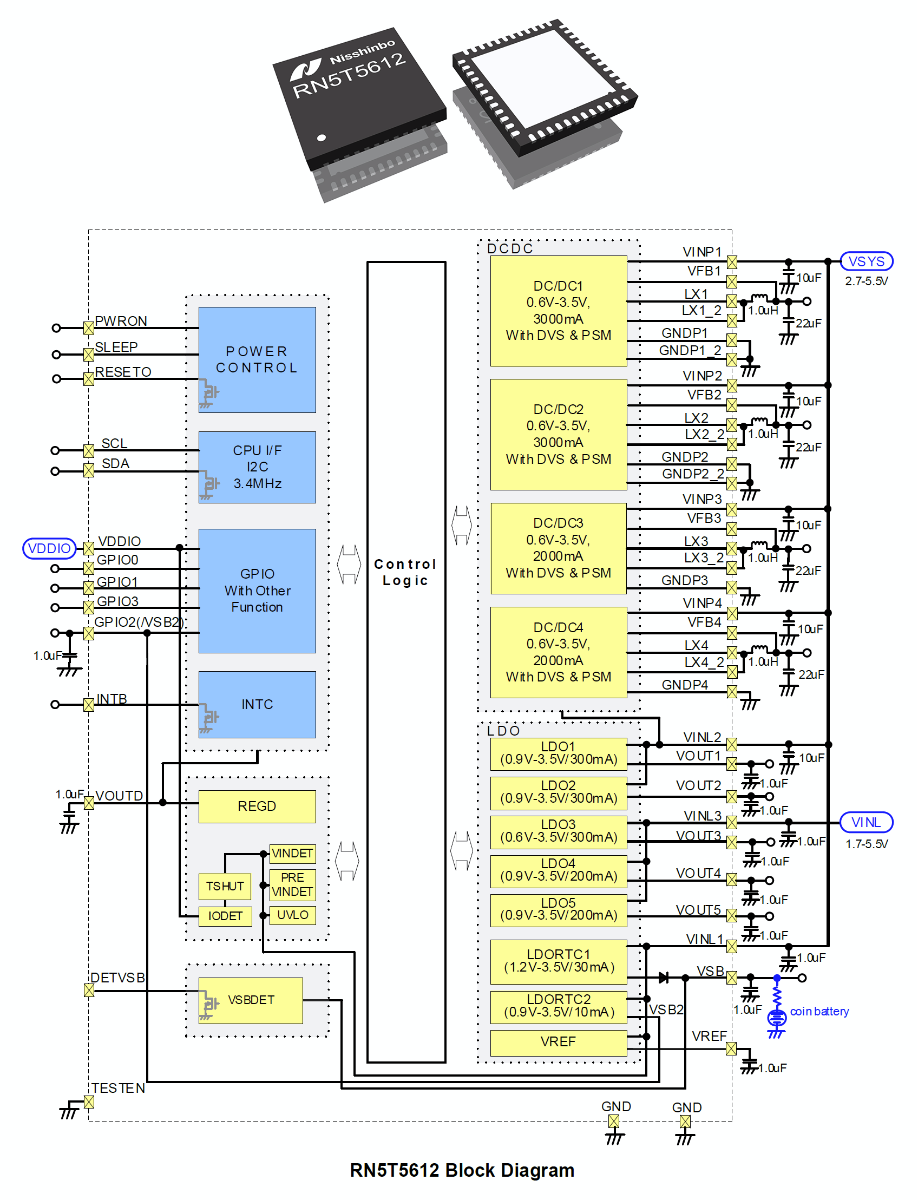
Furthermore, the IC offers On, Off, and Sleep operating modes, with current consumption ranging from 13µA in Off-mode to a peak of 440µA in On-mode, depending on which outputs are enabled. The four integrated Buck DC/DC Converters can supply 2x 2A and 2x 3A output current with up to 95% efficiency, using a 1µH inductor and a 22µF output capacitor.
Five LDO regulators provide flexibility with three 300mA and two 200mA outputs, featuring fast transient response, low output noise and high ripple rejection. Two additional LDOs are always on but can be configured to stay off when not needed. One of these LDOs supports RTC backup power with reverse current protection, and the other is available for other applications.
Target applications are industrial controller units, PLCs, Servo motor drivers, application processors, SoCs, FPGAs and single board computers. A reference circuit is available to simplify the design of the power supply, as well as a bill of material with recommended components. An optimized PCB footprint design is available for convenience to achieve a maximum performance of the circuit.


